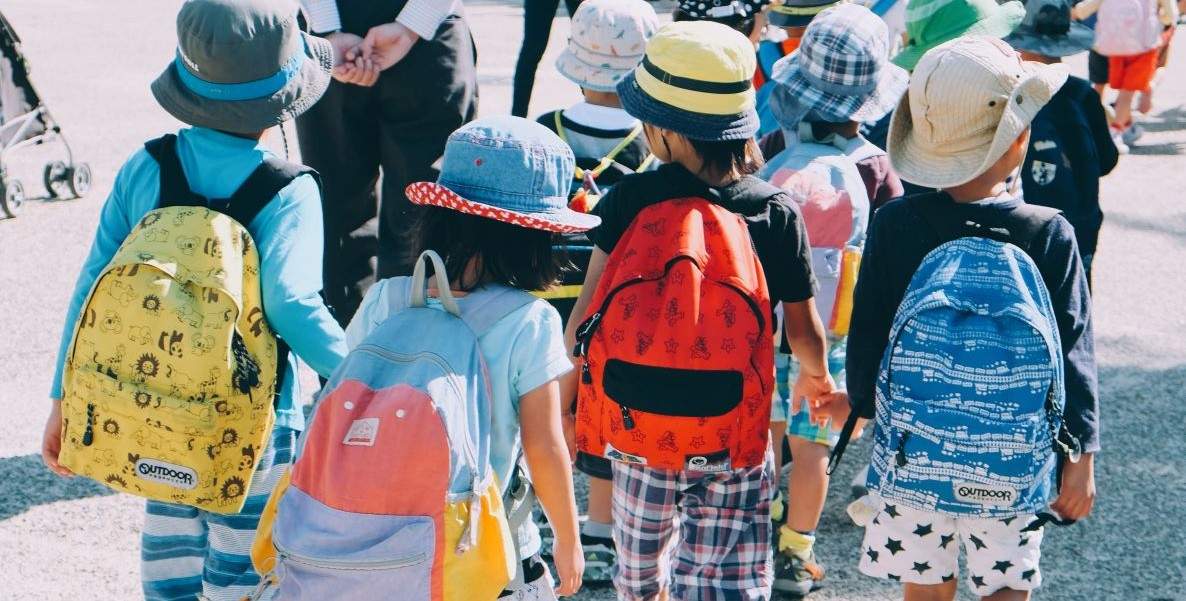In the world of automated, stapleless staplers, it may come as a surprise that I use a Swingline Vintage Heavy Duty Metal Model 94-41. But as an educator in the City of Philadelphia for over a decade, I am more likely to use the stapler to fix broken backpack straps than to compile writing assessments.
The narrative is always the same — the now-one-strapped student bag was gifted at a back-to-school giveaway. Though it features last year’s Pantone Color of the Year, the backpack is unable to hold anything beyond the simple spiral notebook and three pencils that came in its pouch. This year, as we prepare for back to school, I implore you to reconsider your backpack donations.
Target just sent me its flier for back to school, and Crayola has new color combinations with names like “Colors or Kindness” and “Bright for Construction Paper.” As the July heat languishes, many congregations and organizations will be requesting school supply donations. This week, fliers soliciting backpack donations crept up the telephone poles of my North Philadelphia neighborhood. When I went to pick up my toddler a sparkly dodgeball at a local discount store, I was prompted to contribute $5 for a new student backpack donation.
But, as a teacher, I know these donations are only a temporary fix — akin to my botched attempts at stapling padded nylon. By late October, the straps are falling off and students hobble for a bag to lug their belongings to and from countless public SEPTA trips.
Quality, not quantity
A few months ago, an eager church group who wanted to donate backpacks solicited my advice (whether for being a teacher or bargain shopper, I am not sure). They were surprised by the cost of a quality backpack that would get students through the whole year — in case you haven’t gone back-to-school shopping for sometime, a barebones JanSport sack is $38, most models are upwards of $80. For the group, it made more sense to purchase the backpacks en masse at Five Below. More backpacks. More kids. More impact. But, let me assure you as a teacher for over a decade, those bags barely make it to see the autumn leaves. I can make one stapler attempt — when two straps are broken, it’s a lost cause.
To be sure, this “backpack cycle” is especially problematic for the neediest students, particularly students who are in foster care and rely on the bags to carry personal belongings that they don’t feel comfortable leaving at placement. I once had a student that insisted on locking his duffle up in my classroom closet. I didn’t know until months later that he carried his soul possessions in that black Adidas bag. I clearly remember the emblem of quality on his bag and shudder to think what may have become of his lone belongings on the long commute to school if he hadn’t had a quality bag.
Invest in a product that is enduring, that you would feel comfortable with your children using for the year.
This year, instead of quantity, consider the quality of backpack donations for Philadelphia’s students. What I am not suggesting is that you purchase a commuter bag from Lululemon or this year’s trending bag from SprayGround. Please conceptualize your investment as an essential school supply just as you would a charity. Invest in a product that is enduring, that you would feel comfortable with your children using for the year.
I get it, folks are short on cash with prohibitively expensive … well, everything. I understand that these investment approaches will not guarantee every child a backpack (but not every student, in fact, needs a backpack). But let’s give the neediest Philadelphia students something that actually works. There is potential in the past collaboration programs of Meek Mill with Puma (after all, I still see these backpacks). Donate directly to an organization like Cradles to Crayons who will purchase needed supplies with specificity and without profit.
Sometimes, when the vintage stapler doesn’t work on the cheap backpacks, my students ask for a plastic bag. Leftover shoppers from ShopRite and Athleta shouldn’t last longer than your $5 character-inspired and SHEIN backpack donations.
Lydia Kulina-Washburn, a North Philadelphia resident, teaches high school English in a city public school. Her work has been featured in Huffington Post, Chalkbeat, Ed Weekly, among others. Follow her @lydiakulina
The Citizen welcomes guest commentary from community members who represent that it is their own work and their own opinion based on true facts that they know firsthand.
![]() MORE ON OUR SCHOOLS FROM THE CITIZEN
MORE ON OUR SCHOOLS FROM THE CITIZEN



